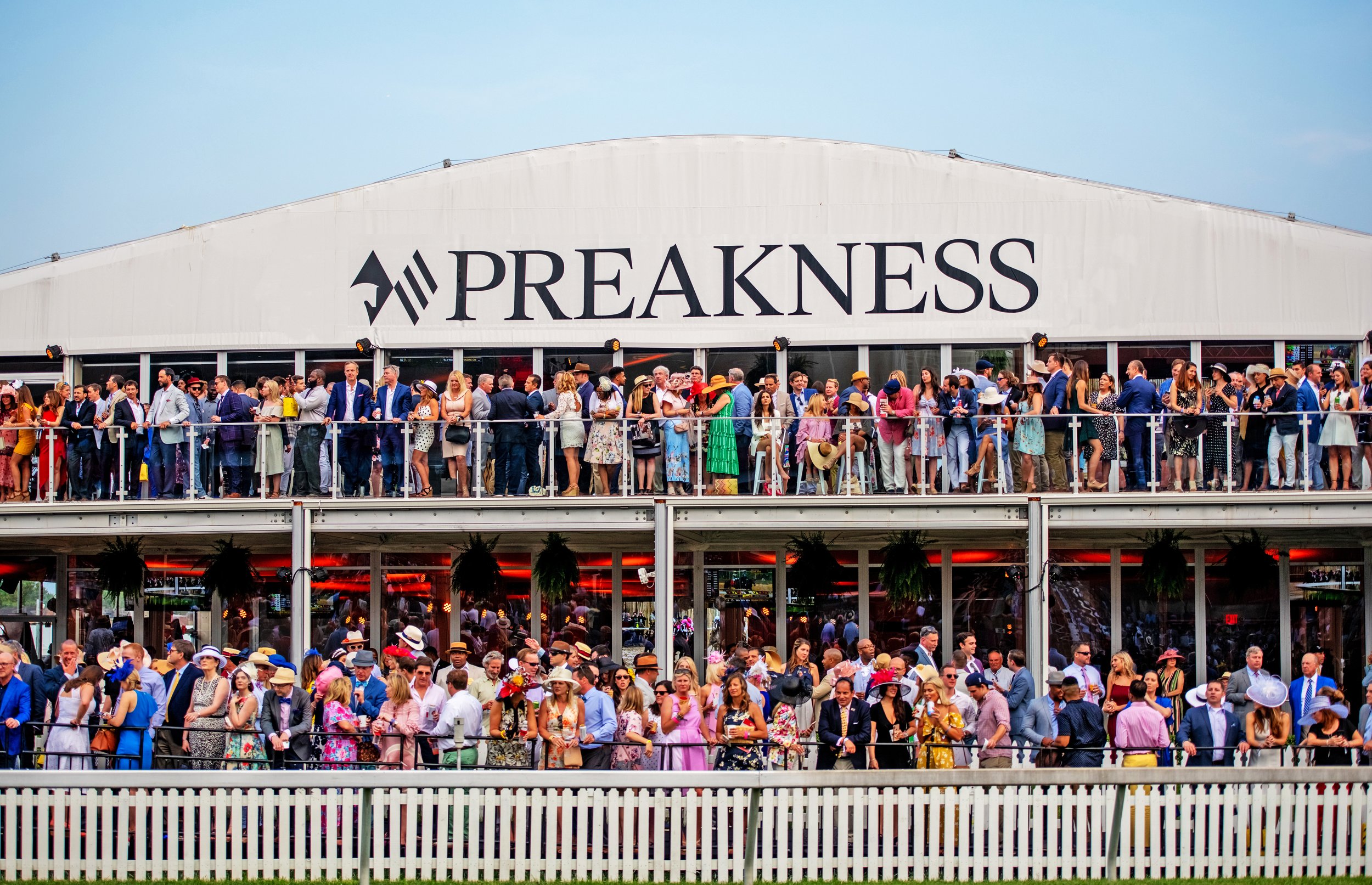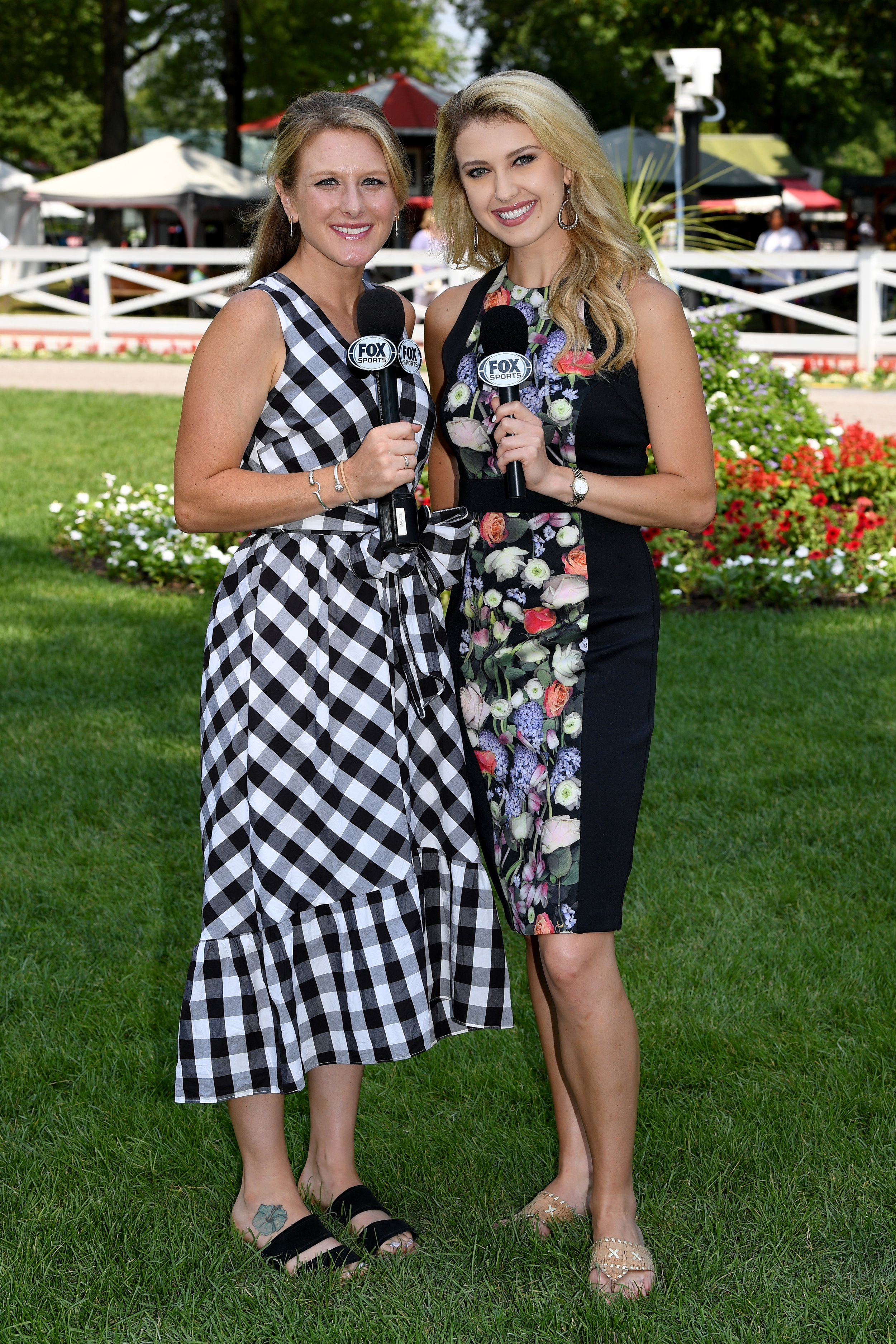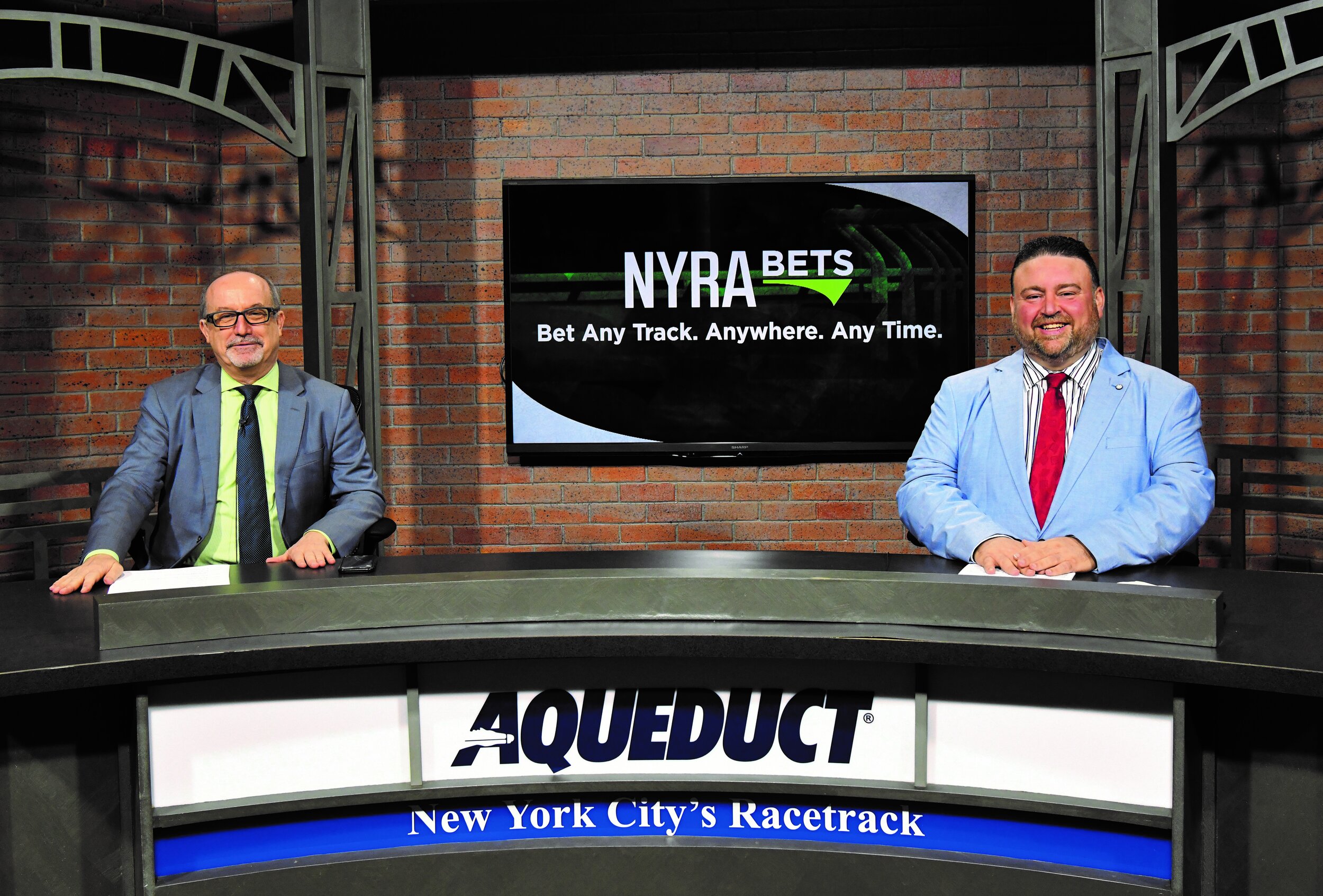Marketing racing - the efforts being made by tracks across North America
/By Ken Synder
At some point in time—70 years or so ago in the 1950s—the decision was made by the “powers that were” in horse racing to not broadcast races on the burgeoning medium of television. There was a fear that it would keep fans home watching racing on TV rather than at the racetrack. The decision, of course, backfired. On-track attendance diminished in a sport that had historically been part of a “Big Three,” which included baseball and boxing.
In one of those strange twists of history, the decision also succeeded many years later in driving the biggest part of racing’s fan base to… guess what? Television. Today, TV networks like TVG broadcast racing from around the country, and even the world, to viewers at home with Advance Deposit Wagering accounts.
Things, obviously, have changed and changed hugely. But some things haven’t. The following newspaper headline, provided by Aidan Butler, chief operating officer of 1/ST Racing and president of 1/ST Content, is as true then as it is now: “No young people come racing anymore.” When was it written? The 1930s.
Young people and equally, if not more importantly, new owners don’t “come racing anymore.”
Ironically, television is the lifeline for the sport and perhaps the “tip of the spear” for bringing in those missing young people and new owners.
In 2019, at one of the sport’s major venues, Santa Anita, there were 13 racing fatalities on the dirt surface. This may have been the nadir for horse racing, threatening the very existence of the sport in California with potential effects rippling to racetracks across America and those involved in breeding and sales in Kentucky and Florida. But in a state with the most virulent cancel culture, Santa Anita—specifically the Stronach Group and 1/ST Racing—“canceled the cancelers.” In 2020, there were zero racing fatalities on the dirt surface.
What do animal welfare and safety have to do with marketing? It’s elementary: Marketing begins with a product. “The best thing we’ve got is the horses above anything else,” said Butler.
“The world is changing. Do people want to be involved or watch a sport that involves animals? There’s not one group now that doesn’t have an outlook toward the animal welfare and the care of the animals to make it safer.”
He offers a brutal assessment of the past, which may account for racing’s journey to some kind of abyss in 2019. “We’ve inherited an old-fashioned model where maybe it [safety] once wasn’t the core focus.”
“The culture now in California, particularly at Santa Anita, is one that, if anything goes wrong, everybody is horrified. Everybody sees that there’s not going to be a future. For years, when something went wrong, it was an accepted thing.”
The safety of horse and rider is part of a big jigsaw puzzle, he said, but perhaps it is the most important piece in marketing a sport perceived negatively by many. He recalled a dinner in California with someone who visibly winced when informed Butler was part of the racing industry. “He said, ‘You’ve been having a lot of injured horses, right?’” Butler conceded that yes, that was the case in 2019 but then went through changes that produced dramatic improvements—most critically vet inspections during training hours—to get across that positive animal welfare, born out statistically at Santa Anita, has never been higher.
“In 30 minutes, he couldn’t wait to come out to the track,” said Butler, adding with a laugh, “It’s going to take a long time to go through everybody in California over dinner.”
Of course, that’s where marketing in the traditional sense takes over, but not all in the traditional mediums of radio, TV and newspaper. For younger potential fans, “the first touchpoint these days is digital,” said David Wilson 1/ST’s chief marketing officer. “It’s on the iPhone or smartphone. Having strong social media is really our opportunity to cultivate our community, connect with them and inspire them to come to our tracks.
“It’s about the convergence of sports, entertainment and technology.” Wilson believes the task is creating narratives and stories that will capture the imagination of potential younger fans who have had little or no exposure to horse racing.
Part of that too, according to Wilson, is marketing to younger fans in audiences not previously targeted. “We need to look at how we are addressing women in the sport. How are we addressing African-American and Latino communities? How are we making sure that any minorities have opportunities not only to work within our companies but to feel represented? We make very conscious efforts that if we want to be a modern company, we want to address all of our customers, and all of our customers are diverse. Our marketing and our social platforms and the inspiration between the sport and entertainment all need to reflect that.”
Traditional markets as well are being looked at in new ways. “Your owners bring other people. These are potentially new owners and it’s grassroots, but it is something that’s been overlooked.”
To show appreciation to owners, all 1/ST race tracks make “best turned-out” awards every day—something routine in the UK and Ireland but novel in the U.S., except for major race days. Champagne toasts after every win are also standard at tracks.
“It’s so difficult, especially during some of the big meets, to get a winner; and you have to try and bend over backward to show the owners that you are really thankful for their participation,” said Butler.
For bettors and others who love horses or simply want a day at the races, one task for racing marketers is how do you add to weekday attendance on, say, a Wednesday afternoon at Gulfstream Park in the blazing summer heat? “There is really no easy answer,” Butler admits, but there is effort. Gulfstream is attracting people to the track for business lunches with food and beverages on par with the best restaurants and a backdrop the restaurants, of course, can’t offer: horses.
Gulfstream is also exploring the engineering for lighting the racetrack for night racing, which should boost on-track attendance on those days that normally don’t draw a lot of fans while also beating the Florida heat.
1/ST is not the only racetrack seeking enhanced owner-engagement and new fans, especially in the wake of COVID-19. Some tracks are also doing things to combat unique obstacles.
Canada’s Woodbine Racetrack in Toronto—the premier racing venue in Canada—is challenged by a dearth of owners. “We don’t have tax benefits for owners like you get in the States,” said Martha Wakeley, who manages horsemen concierge services and is also manager of Racing Operations. The biggest hindrance, however, is a population base generally without a family background in racing unlike the U.S., where racing is bequeathed to succeeding generations in places like Kentucky.
COVID, oddly enough, offered Woodbine an opportunity to evaluate the owner experience. Because COVID allowed only owners on track during lockdowns, management was able to see and define needs in hospitality and customer service that had, perhaps, gone unnoticed before. Wakely called it a “silver lining” that came out of the pandemic. “We opened an exclusive lounge just for owners and trainers and their guests,” she said, noting that most trainers at Woodbine are also owners.
The goal with owners is to recognize their importance and to make them feel special. Part of that, too, is for guests of owners to see that their hosts and hostesses are very important to Woodbine. Wakely stated something that is obvious but still often overlooked: “Without the owners, we don’t have a job.”
The track has invested much time and travel in marketing to owners as well as everyday race fans. Hospitality teams from Woodbine have visited Santa Anita, Saratoga, Keeneland and Churchill Downs to study and replicate what works at U.S. tracks.
Woodbine may, however, exceed the U.S. customer experience with concierge services beyond the racetrack. “We have looked at groups coming in for stakes races and being available to book golf tee times and tickets to the theater,” said Wakely. “We want to be able to offer all that to make it a whole weekend experience.”
The experience at Keeneland Race Course in Lexington, Kentucky is well-known; it is the “Fenway Park” of American racing—the required destination for “racing as it was meant to be,” to quote a marketing theme from years back. It is arguably the most picturesque and bucolic in the world. It is also not lacking for patrons. In the last pre-COVID year, 2019, Keeneland’s daily attendance average was just over 15,000 for the spring/April meet and was slightly higher in the fall/October meet.
So what do you do when you don’t lack for owners and, most critically, racing fans? In the case of Keeneland, they have written the proverbial book on corporate sponsorships. Two sponsors, Toyota and Maker’s Mark bourbon, have surpassed 25 years with Keeneland. Two other sponsors—Rood & Riddle Equine Hospital and Darley—will reach the 20-year mark with Keeneland this year.
“Sponsorships are incredibly valuable to Keeneland, as they provide important funding for our racing purses, our investments in fan education, advancements in safety and integrity initiatives, philanthropic initiatives for our sport and the central Kentucky community…and the list goes on and on,” said Christa Marillia, Keeneland vice-president and chief marketing officer.
In Lexington, local horse farms like Claiborne Farm, Coolmore, and the aforementioned Darley also sponsor premier stakes races, essentially investing in their own industry. “They buy and sell horses at our auctions, compete on our racetrack, and understand and appreciate the full circle of Keeneland’s business model,” Marillia said.
NYRA & Fox Sports host and paddock analyst Maggue Wolfendale (L) with host and reporter Acacia Courtney (R)
In an irony of ironies, racing beyond Triple Crown races and the TVG network catering to ADW accountholders has made its way to national telecasts regularly. “America’s Day at the Races,” produced by NYRA and airing on Fox network channels FS1 and FS2, features live racing on Saturdays and Sundays. The impetus for NYRA was entry into the ADW market, a revenue stream already flowing for Twin Spires, Express Bet and TVG. “We really were playing catchup so we thought we needed a TV strategy,” said Tony Allevato, chief revenue officer for NYRA and president of NYRA Bets.
“Our original concept was we would pick up selected dates during the year and put them on Fox regional networks—Fox Sports West, Fox Sports Ohio. We put together a pilot and showed it to Fox. They loved it,” said Allevato. Instead of a regional strategy, however, the pilot spurred Fox to suggest a show on FS2, broadcasting nationally.
The first production was a daily show from Saratoga, two hours a day and produced by NYRA’s TV department with input from Fox that amounted to 80 hours the first year.
“We got a fantastic reaction from the industry,” said Allevato. Broadcast hours were added, and Fox acquired equity with NYRA, which gave the network a slice of the ADW wagering. “We’ve provided an extra revenue stream for the telecast. Not only is there the traditional advertising and sponsorship revenue, but you also have wagering dollars coming in; and it’s become a win-win for both of us. For Fox, they’re incentivized to give us the most distribution possible.”
Distribution included the recent Arkansas Derby, broadcast on FS1 as part of “America’s Day.” “We have a couple of shows that will be on Fox [the main network] this year, which will be over a million viewers for each one of those. That’s more eyeballs watching horse racing, more wagering, more account signups, more fans. It’s really almost like we’re creating a new ecosystem to help grow the sport,” said Allevato.
Growth is aimed at more than just ADW accounts, he added. “Even though the sport has really gone to online betting, our goal is to get people to come to the track. That’s our number-one goal. We believe once you come to the track, you will become a fan for life.”
“America’s Day” content is aimed at driving live attendance at racetracks. “The stories are all there: Within every race, there’s an owner, there’s a trainer, there’s a jockey, there’s a groom, there’s the pace of the race, there’s the favorite.”
NYRA doesn’t forget marketing to owners either, according to Allevato. “One of the rules for our show is we must interview one owner at a minimum, and that doesn’t mean just for a million-dollar race; it can be for a ten-thousand dollar race.
Allevato, too, points with pride to production values that rival, if not surpass, that of other sports. “When we’re covering a race in New York, we’ll have 35 cameras on a certain select day, compared to a college basketball game with seven cameras. That is a real big-time production.
NYRA & Fox Sports TV analysts Andy Serling (L) and Anthony Stabile (R)
“With the Arkansas Derby, we had three people at Aqueduct contributing remotely and six announcers at Oaklawn Park.
“We believe horse racing is our sport. We want people flipping through the channels, land on a Fox Sports 2 or FS1, see “America’s Day at the Races,” and go, ‘Wow, this is major league!’ We don’t ever want to come across as a second-tier product.”
Can all of this be “the start of something big,” to borrow from the song title? Combined with the Horseracing Integrity and Safety Act potentially providing central governance, successful marketing aimed at improving on-track owner-trainer-fan experiences, and NYRA’s venture into national television the impact, are promising. Can it take racing back to its preeminent days in the first half of the 20th century, when it was one of the three biggest sports in the land? There is more competition for sports fans than in the ‘50s.
If “something big” isn’t starting, however, there’s a better-than-average chance racing may be in store for something bigger at least.





